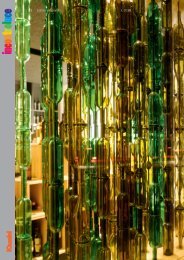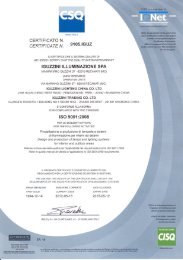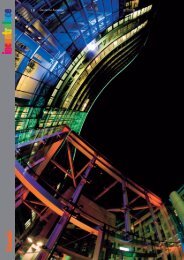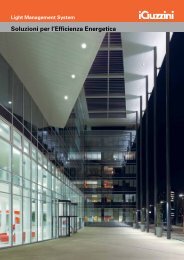Create successful ePaper yourself
Turn your PDF publications into a flip-book with our unique Google optimized e-Paper software.
4<br />
Buildings:<br />
the main source<br />
of energy saving<br />
Renewable energy sources<br />
Automation and integrated building<br />
management<br />
Energy monitoring and<br />
management<br />
Energy efficiency<br />
The increasingly widespread use of heating, air<br />
conditioning, lighting and new technology has provoked<br />
a considerable increase in energy demands in our<br />
buildings. Consequently up to 50% of CO 2 emissions can<br />
be attributed to commercial and residential buildings on<br />
account of their high level of electricity consumption.<br />
Today buildings are the main source of potential energy<br />
savings that would allow us to meet our goals and protect<br />
the environment.<br />
To reach the goals outlined in the Kyoto Protocol,<br />
we must start now. Insisting on energy efficiency is<br />
the fastest, cheapest and cleanest way to reduce<br />
consumption and CO 2 emissions.<br />
Making buildings more efficient from an energy point<br />
of view does not necessarily mean costly changes and<br />
system interruptions.<br />
Renewing existing buildings can guarantee energy<br />
savings of up to 30% by simply implementing easy-to-use<br />
services and technology that are already available.<br />
40%<br />
Commercial and residential buildings<br />
account for 40% of global energy<br />
consumption<br />
30%<br />
Controlled lighting<br />
HVAC control systems<br />
(heating, ventilation<br />
and air conditioning)<br />
The distribution of electrical energy<br />
Reducing energy consumption by<br />
30% before 2020 would avoid<br />
the need for 1000 new power<br />
stations.
















